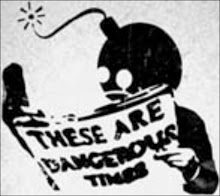“Another exercise that is very effective is walking on colors. Pick out all the reds on a street, focusing only on red objects–brick, lights, sweaters, signs. Shift to green, blue, orange, yellow. Notice how the colors begin to stand out more sharply of their own accord. I was walking on yellow when I saw a yellow amphibious jeep near the corner of 94th Street and Central Park West. It was called the Thing. This reminded me of the Thing I knew in Mexico. He was nearly seven feet tall and had played the Thing in a horror movie of the same name, and everybody called him the Thing, though his name was James Arness. I hadn’t thought about the Thing in twenty years, and would not have thought about him except walking on yellow at that particular moment.”
(From “Ten Years and a Billion Dollars” William S. Burroughs in The Adding Machine: Selected Essays, Arcade Publishing, New York, 1985)
“For example, I was taking a color walk around Paris the other day…doing something I picked up from your pictures in which the colors shoot out all through the canvas like they do in the street. I was walking town the boulevard when I suddenly felt this cool wind on a warm day and when I looked out all through the canvas like they do in the street. I was walking down the boulevard when I looked out I was seeing all the blues in the street in front of me, blue on a foulard…blue on a young workman’s ass…his blue jeans…a girl’s blue sweater…blue neon…the sky…all the blues. When I looked again I saw nothing but all the reds of traffic lights…car lights…a café sign…a man’s nose. Your paintings make me see the streets of Paris in a different way. And then there are all the deserts and the Mayan masks and the fantastic aerial architecture of your bridges and catwalks and Ferris wheels.”
(Burroughs, from an interview with Brion Gysin in 1960)
@
'Word Object'







